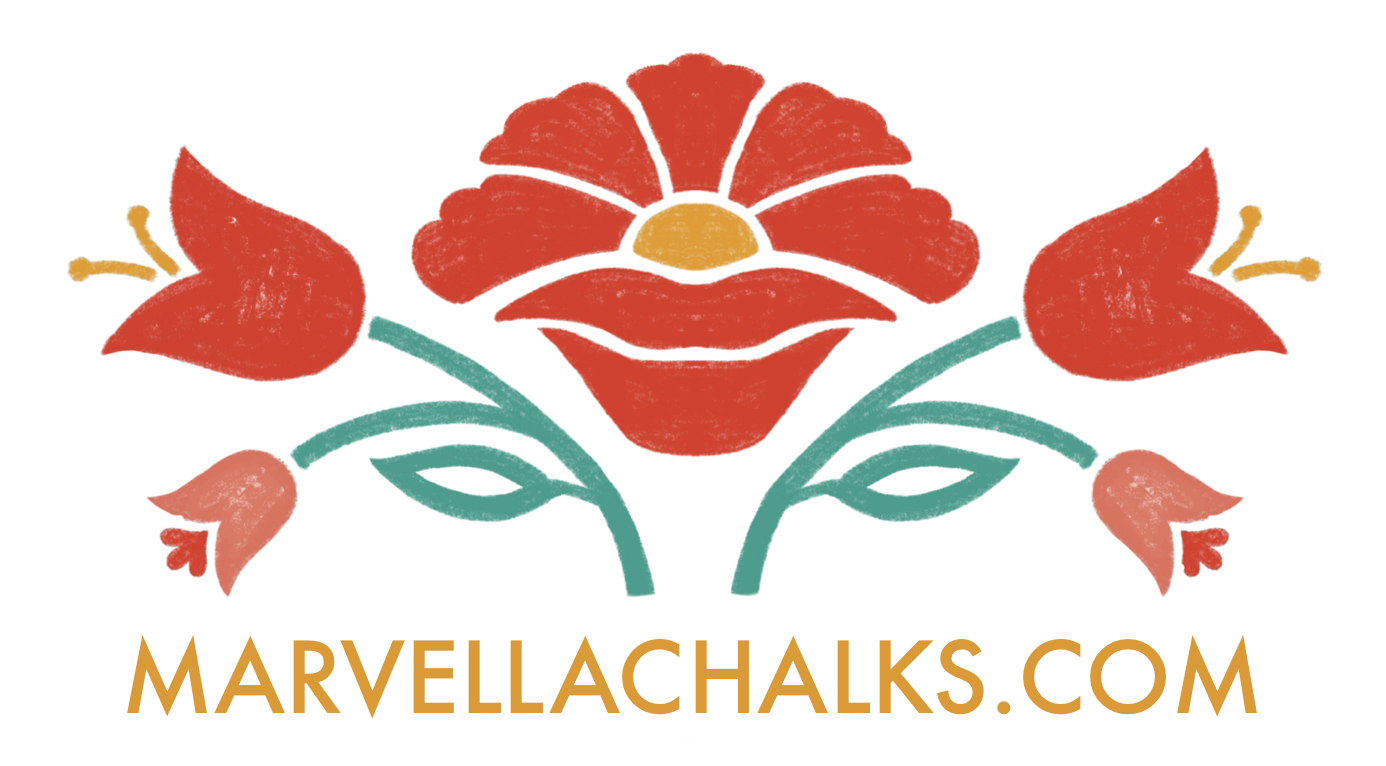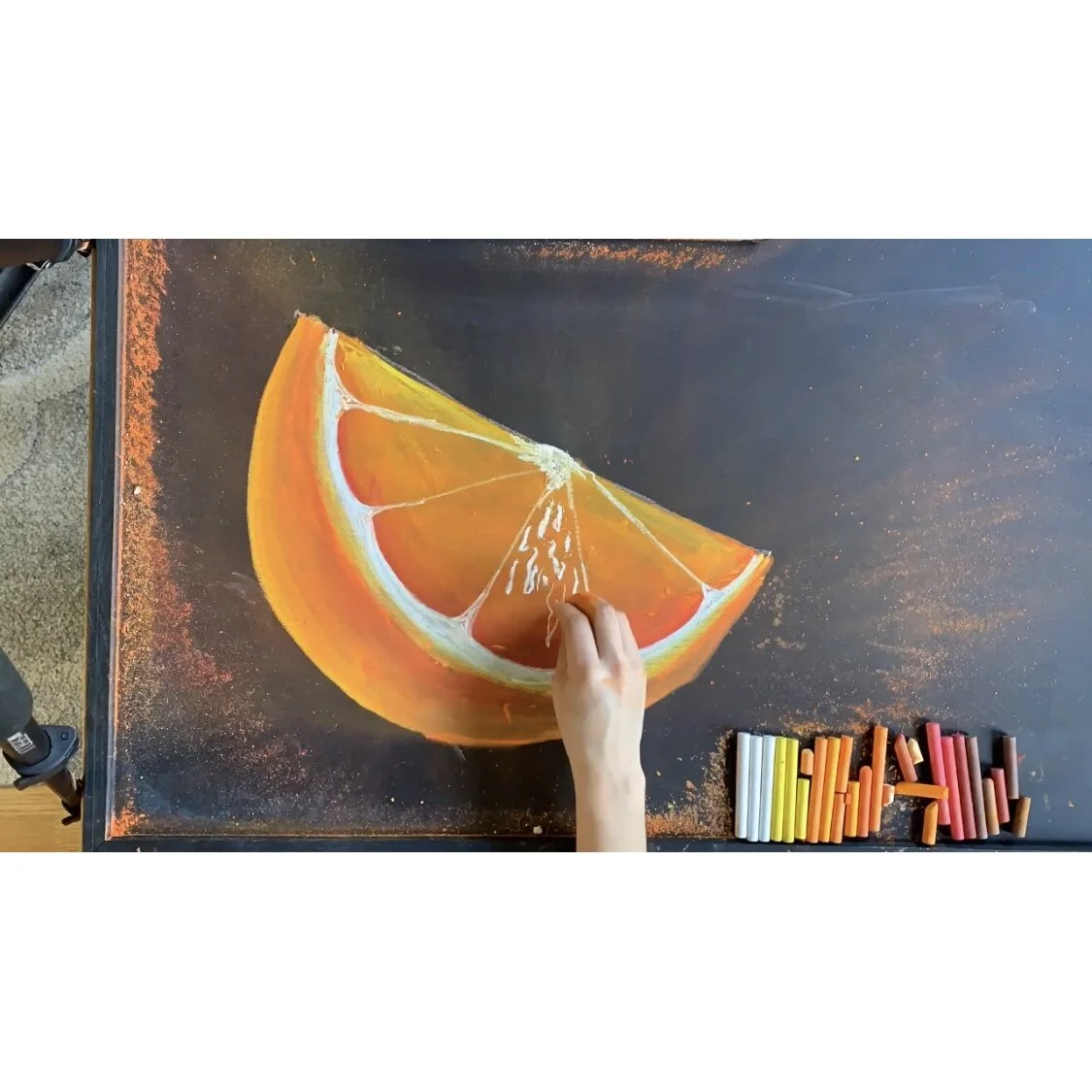Orange Wedge Tutorial
I recently made some chalk art for Kyrstal on Bourbon Street in New Orleans. The whole enormous chalk mural consisted of menus, cocktails, and food, including this awesome orange:

Well, I’ve decided to make a mini tutorial to show you how to draw an orange wedge like this with chalk. Below are two ways to follow along: video or pictures.
There’s a video which was originally a timelapse, but I’ve slowed it down for the visual process. Feel free to pause to refer to the steps at your own pace. This was my first tutorial so the speed and timing are a little off. I’m sorry!
Make sure to turn on subtitles or the cc button to read along with the process.
And I’ve also included a step by step version in pictures for those of you that don’t prefer video processes.
I used the Crayola chalk 144 ct box. Grab the dark red, the regular red, the dark orange, medium orange, light orange, yellow, dark brown, and white. You also need a wet towel for cleaning, a non-plastic chalkboard for best results. I painted this plastic chalkboard with chalkboard paint, 3 coats, so that the chalks will blend smoothly.
1. Start with the basic outline of an orange wedge. It doesn’t have to be perfect. Feel free to wipe off the extra lines though. (Dark wet spots in photo are from when I clean up my lines)
2. Add a yellow outline on the bottom of the peel and blend it into the orange, keep it towards the top part of the peel.
Next, add a little bit of the dark brown at the bottom of the peel. Blend it in.
4. Next, add a thick white line touching the inside of the yellow line you just made. Using your finger, start at the top of these two lines and blend both colors by following the center all the way to the bottom. Just one motion for blending is all it needs.
8. Using the medium orange, fill in all of the segments. Go over the red area as well. Smooth out the orange area first, then gently push the orange into the red. If you push the red into the orange then you’ll get a dark red orange instead of a dark orange.
9. Using the light orange, add another layer but only towards the top. The goal is to have a soft gradient of dark orange to light yellow. So, blend the the light orange only towards the center. Now, add yellow at the very top and blending it only a little into the orange. The yellow is the highlight and should stay closer to the top. (See video for demonstration.)
10. Using white, draw the lines to separate the segments. Fill in a semi-circle type shape at the point where the segments meet. Then, touch up the pith with white chalk to let it stand out. Just don’t cover the yellow part of the pith that you made earlier.
11. Drawing the pulp highlights: Using white chalk, start at the top of each segment and draw linear squiggles towards the bottom. Free-style this part. I made too many thin lines on this orange. Instead draw fatter squiggles to contrast the skinny squiggles. See the photo of the orange at Krystal at the top of this blog for a better example.
13. Detailing the peel: starting in the yellow area of the peel, draw light orange dots. In the orange area of the peel, draw dark red dots. In the red/brown part of the peel draw dark red dots. All of these dots should be small, like the size of a pinky fingertip in this photo. This next part is optional: Slightly blend SOME of the dots. It does make a smooth difference.
14. This step is just to add small yellow dots in the “original” yellow area of the peel. This gives it a nice highlight.
15. It’s time to clean all the dust off. I just took this chalkboard outside and turned it upside down to knock off all the chalk dust. Then I clean around the orange with the wet towel.
This is how I normally draw most of my chalk art. There are a lot of layers and blending. The important part is knowing which colors to push into which color and direction first. It makes all of the difference! If you tried this tutorial, please let me know by tagging me in your post or just emailing it to me. I’d love to know any questions you have or which parts of this came across a little confusing.
Happy chalking!

















